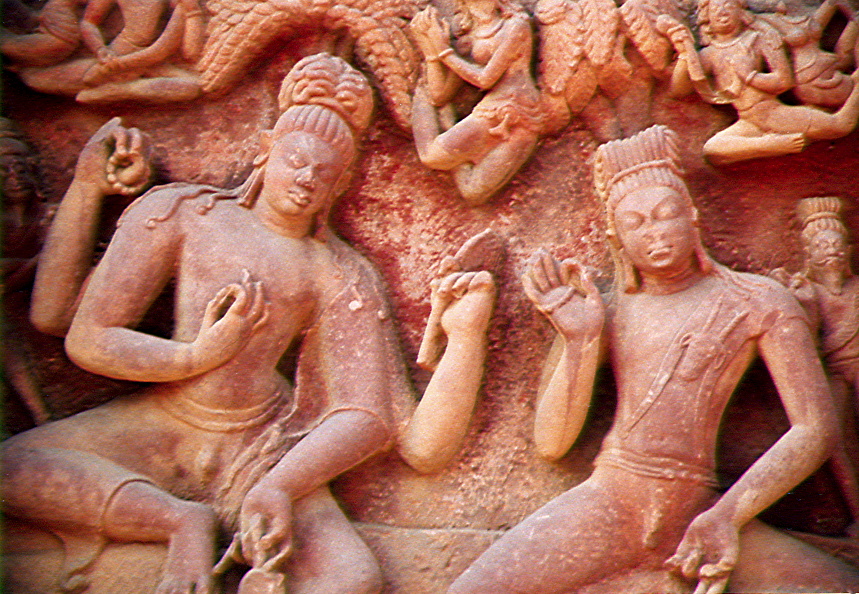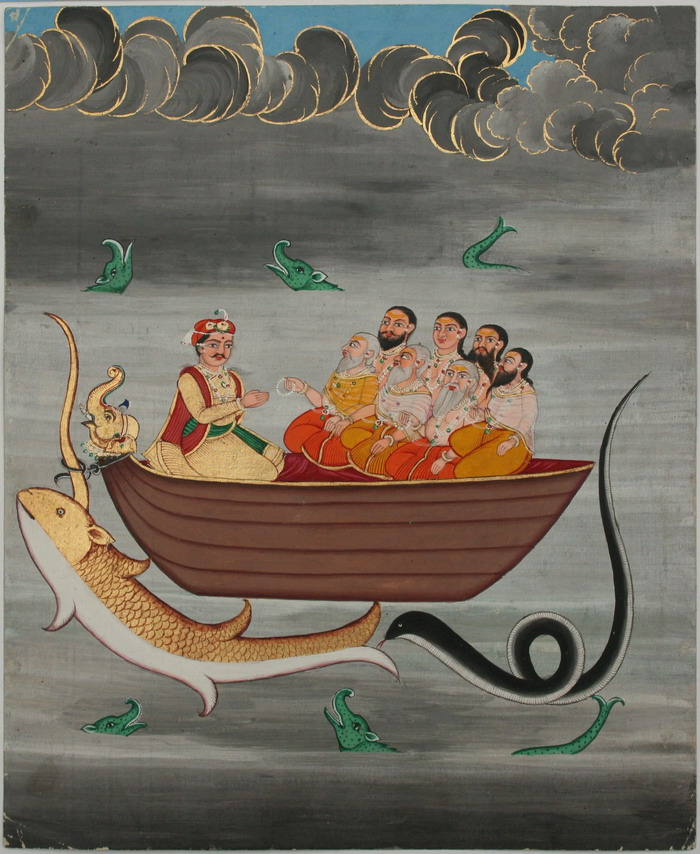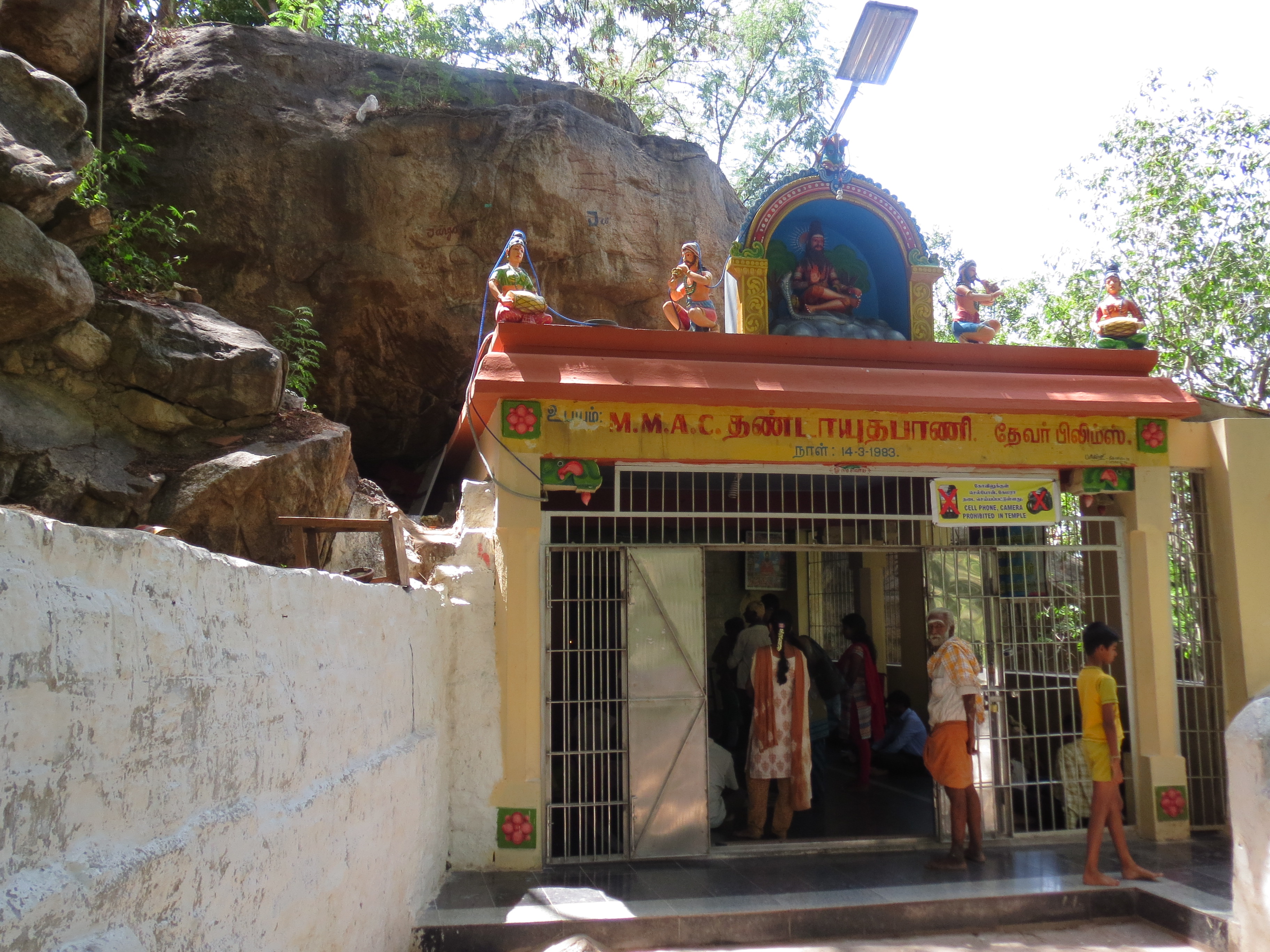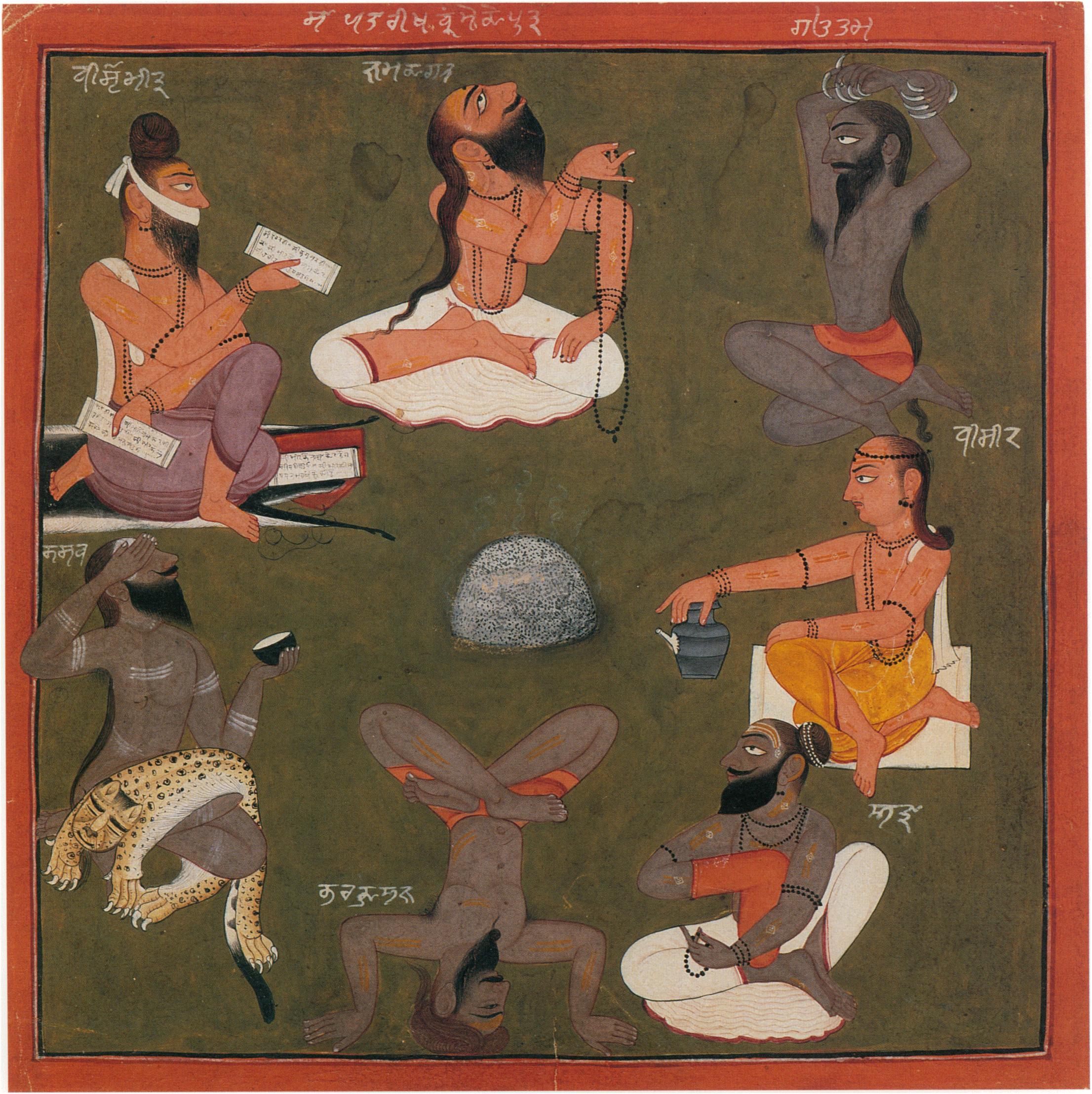|
Agastya
Agastya was a revered Indian sage of Hinduism. In the Indian tradition, he is a noted recluse and an influential scholar in diverse languages of the Indian subcontinent. He is regarded in some traditions to be a Chiranjivi. He and his wife Lopamudra are the celebrated authors of hymns 1.165 to 1.191 in the Sanskrit text ''Rigveda'' and other Vedic literature. Agastya is considered to be the father of Siddha medicine. Agastya appears in numerous itihasas and Puranas including the major ''Ramayana'' and ''Mahabharata''. He is one of the seven most revered rishis (the Saptarishi) in the Vedic texts, and is revered as one of the Tamil Siddhar in the Shaivism tradition, who invented an early grammar of the Old Tamil language, Agattiyam, playing a pioneering role in the development of Tampraparniyan medicine and spirituality at Saiva centres in proto-era Sri Lanka and South India. He is also revered in the Puranic literature of Shaktism and Vaishnavism. He is one of the Ind ... [...More Info...] [...Related Items...] OR: [Wikipedia] [Google] [Baidu] |
Lopamudra
Lopamudra, also known as Kaveri, Kaushitaki and Varaprada, was a philosopher according to ancient Vedic Indian literature. She was the wife of the sage Agastya who is believed to have lived in the Rigveda period (1950 BC-1100 BC) as many hymns have been attributed as her contribution to this Veda. She was not only the consort of Agastya but a Rishiki in her own right, as she was the well known Rishiki who visualized the "Hadi Panchadasi" mantra of the Srikul Shakta tradition of Hinduism. She was one of the prominent Brahmavadinis. There are three versions of Lopamudra's legend; one is in the Rigveda Hymns; the second is in the epic Mahabharata (Vanaparva: Tirtha-yatra Parva), where there is an elaborate version with a mention that Agastya Rishi did penance at ''Gangadwara'' (Haridwar), with the help of his wife, Lopamudra (the princess of Vidarbha). According to this legend, Lopamudra was created by sage Agastya with the most graceful parts of animals such as eyes of the deer ... [...More Info...] [...Related Items...] OR: [Wikipedia] [Google] [Baidu] |
Agastya Samhita
''Agastya Samhita'' (; ) is the title of several works in Sanskrit text attributed to the ancient sage (''rishi'') Agastya. Pancharatra One of the ''samhitas'' of the '' Pāñcarātrāgama'' is the ''Agastya Saṁhitā'', which is about the worshipping of Rāma, Sītā'','' Lakṣmaṇa, and Hanumān, as laid down by Agastya. It is also known as ''Agastya-Sutīkṣṇa-Samvāda'', as it is in the form of a conversation between the sages Sutīkṣṇa and Agastya. There are also other works titled ''Agastya Samhita'' among the Pancharatra texts, which are different from ''Sutīkṣṇa-Agastya-samvāda''. Puranas Sections of certain Puranas believed to have been written by Agastya are called ''Agastya Samhita'' as well. Skanda Purana A section embedded in ''Skanda Purana'' is known as ''Agastya Samhita'', and sometimes called the ''Sankara Samhita''. It was probably composed in late medieval era, but before the 12th-century. It exists in many versions, and is structured as ... [...More Info...] [...Related Items...] OR: [Wikipedia] [Google] [Baidu] |
Agattiyam
__NOTOC__ ''Agattiyam'' (), also spelled as ''Akattiyam'', according to Tamil tradition, was the earliest book on Tamil grammar. It is a non-extant text, traditionally believed to have been compiled and taught in the First Sangam, (circa 300 BC) by Agattiyar (Agastya) to twelve students. Agastya is one of the seven revered ''rishi'' of Vedic literature, mentioned in the ''Rigveda''. A few surviving verses of Akattiyam are said to be quoted in medieval commentaries.Kamil V. Zvelebil, Companion Studies to the History of Tamil Literature Hindu scholars, is variously credited with either creating the Tamil language or learning it from the god Shiva. In contrast, according to medieval era Tamil Buddhism, Buddhist scholars, the sage learned Tamil from Avalokiteśvara, Avalokita. These legends are mentioned in Akitti Jataka and in Tamil Buddhist epics. There is no direct mention of the sage's name, or ''Agattiyam'' text, in '' Tolkappiyam'' or the bardic poetry of the Sangam literatu ... [...More Info...] [...Related Items...] OR: [Wikipedia] [Google] [Baidu] |
Urvashi
Urvashi (, ) is the most prominent apsara mentioned in the Hindu scriptures like the ''Vedas'', the epics ''Ramayana'' and ''Mahabharata'', as well as the ''Puranas''. She is regarded as the most beautiful of all the apsaras, and an expert dancer. Urvashi has been featured in many mythological events. She emerged out of the thigh of sage Narayana and occupies a special place in the court of Indra, the king of the gods and ruler of svarga. She is famous for her marriage with Pururavas, the first king of the legendary ''Chandravamsha'', whom she later abandoned. She also plays a significant part in the birth of Vashishtha and Agastya, two of the most revered sages in Hinduism. Urvashi's story has been an inspiration for various arts, performances and literature. The poet Kalidasa (fl. 4th -5th century CE) has adapted Urvashi and Pururavas as the main characters in his play Vikramorvashiyam. Etymology The Sanskrit name ''"Urvaśī"'' is derived from roots''uru'' and ''aś''. ... [...More Info...] [...Related Items...] OR: [Wikipedia] [Google] [Baidu] |
Varuna
Varuna (; , ) is a Hindu god. He is one of the earliest deities in pantheon, whose role underwent a significant transformation from the Vedic to the Puranic periods. In the early Vedic era, Varuna is seen as the god-sovereign, ruling the sky and embodying divine authority. He is also mentioned as the king of asuras, who gained the status of a deva, serving as the chief of the Adityas, a group of celestial deities. He maintains truth and ''ṛta'', the cosmic and moral order, and was invoked as an omniscient ethical judge, with the stars symbolizing his watchful eyes or spies. Frequently paired with Mitra, Varuna represents the magical and speculative aspects of sovereignty, overseeing the relationship between gods and humans. The transition from the Vedic to later periods saw Varuna's domain begin to shift from the firmament to waters. He became associated with celestial waters, marking the initial phase of his transformation. By the time of the '' Itihasa-Purana'', Varuna ha ... [...More Info...] [...Related Items...] OR: [Wikipedia] [Google] [Baidu] |
Rishi
In Indian religions, a ''rishi'' ( ) is an accomplished and enlightened person. They find mention in various Vedic texts. Rishis are believed to have composed hymns of the Vedas. The Post-Vedic tradition of Hinduism regards the rishis as "great yogis" or "sages" who after intense meditation (Tapas (Sanskrit), tapas) realized the supreme truth and eternal knowledge, which they composed into hymns.Hartmut Scharfe (2002), Handbook of Oriental Studies, BRILL Academic, , pp. 13–15. The term appears in Pali literature as Ishi; in Buddhism they can be either Buddhas, Pratyekabuddha, Paccekabuddhas, Arhat, Arahats or a Buddhist monasticism, monk of high rank. Etymology According to Indian tradition, the word may be derived from two different meanings of the root 'rsh' (). Sanskrit grammarians derive this word from the second meaning: "to go, to move". V. S. Apte gives this particular meaning and derivation, and Monier-Williams also gives the same, with some qualification. Another ... [...More Info...] [...Related Items...] OR: [Wikipedia] [Google] [Baidu] |
Tamils
The Tamils ( ), also known by their endonym Tamilar, are a Dravidian peoples, Dravidian ethnic group who natively speak the Tamil language and trace their ancestry mainly to the southern part of the Indian subcontinent. The Tamil language is one of the longest-surviving classical languages, with over two thousand years of Tamil literature, written history, dating back to the Sangam period (between 300 BCE and 300 CE). Tamils constitute about 5.7% of the Indian population and form the majority in the South Indian state of Tamil Nadu and the union territory of Puducherry (union territory), Puducherry. They also form significant proportions of the populations in Sri Lankan Tamils, Sri Lanka (15.3%), Tamil Malaysians, Malaysia (7%) and Indian Singaporeans, Singapore (5%). Tamils have migrated world-wide since the 19th century CE and a significant population exists in South Africa, Mauritius, Fiji, as well as other regions such as the Southeast Asia, Middle East, Caribbean and parts ... [...More Info...] [...Related Items...] OR: [Wikipedia] [Google] [Baidu] |
Siddhar
The Siddhar (Tamil language, Tamil (romanized) ''cittar)'' in Tamils, Tamil tradition is a perfected individual who has attained spiritual powers called ''siddhi''. Historically, Siddhar also refers to the people who were early-age wandering adepts that dominated ancient Tamil teaching and philosophy. They were knowledgeable in science, technology, astronomy, literature, fine arts, music, drama, and dance and provided solutions to common people's illnesses and advice for their future. Some of their ideologies are considered to have originated during the First Sangam period. Practice Siddhars were typically scientists, saints, doctors, alchemists, and mystics all in one. They wrote their findings in the form of Tamil poems on Palm-leaf manuscript, palm leaf manuscripts. They typically believe in Monotheism, one god, but there are some Siddhars who believe in polytheism. These are still owned by some families in Tamil Nadu and handed down through the generations, as well as bei ... [...More Info...] [...Related Items...] OR: [Wikipedia] [Google] [Baidu] |
Mitra (Hindu God)
Mitra ( ) is a Deva (Hinduism), Hindu god and generally one of the Adityas (the sons of the goddess Aditi), though his role has changed over time. In the #inscrip, Mitanni inscription, Mitra is invoked as one of the protectors of treaties. In the Rigveda, Mitra appears primarily in the ''dvandva'' compound ''Mitra-Varuna'', which has essentially the same attributes as the god Varuna alone, e.g. as the principal guardian of "Truth, Order". In the late Vedic texts and the Brahmana, ''Brahmana''s, Mitra is increasingly associated with the light of dawn and the morning sun (while Varuna becomes associated with the evening, and ultimately the night). In the post-Vedic texts – in which Mitra practically disappears – Mitra evolved into the patron divinity of friendship, and because he is "friend", abhors all violence, even when sacred. Onomastics The Indo-Iranian languages, Indo-Iranian common noun wikt:Reconstruction:Proto-Indo-Iranian/mitrás, *''mitra'' means "(that wh ... [...More Info...] [...Related Items...] OR: [Wikipedia] [Google] [Baidu] |
Pulastya
Pulastya (Sanskrit: पुलस्त्य) is one of the ten Prajapati, and one of the mind-born sons of Brahma in Hinduism. He is also one of the Saptarishi (Seven great sages) in the first age of Manu, the Manvantara.Inhabitants of the Worlds Mahanirvana Tantra, translated by Arthur Avalon, ( Sir John Woodroffe), 1913, Introduction and Preface. The Rishi are seers who know, and by their knowledge are the makers of shastra and "see" all mantras. The word comes from the root rish Rishati-prapnoti sarvvang mantrang jnanena pashyati sangsaraparangva, etc. The seven great Rishi or saptarshi of the first manvantara are Marichi, Atri, Angira, Pulaha, Kratu, Pulatsya, and Vashishtha. In other manvantara there are other ''saptarishi''. ... [...More Info...] [...Related Items...] OR: [Wikipedia] [Google] [Baidu] |
Saptarishi
The Saptarshi ( ) are the seven seers of ancient India who are extolled in the Vedas, and other Hindu literature such as the Skanda Purana. The Vedic Samhitas never enumerate these rishis by name, although later Vedic texts such as the Brahmanas and Upanisads do, so these constellations are easily recognizable. Hindu sacred text An early prototype of the "Saptarishi" concept may stem from the six families associated with the six "Family Books" in the Rigveda Samhita (Mandalas 2–7 in ascending order: Gṛtsamāda, Viśvāmitra, Vāmadeva, Atri, Bharadvaja, Vasiṣṭha). While not a "Family Book", Mandala 8 is mostly attributed to Kaṇva, who could be considered the 7th prototypical Saptarishi. The earliest formal list of the seven rishis is given by Jaiminiya Brahmana 2.218–221: Agastya, Atri, Bhardwaja, Gautama, Jamadagni, Vashistha, and Vishvamitra followed by Brihadaranyaka Upanisad 2.2.6 with a slightly different list: Atri, Bharadvaja, Gautama ... [...More Info...] [...Related Items...] OR: [Wikipedia] [Google] [Baidu] |
Rigveda
The ''Rigveda'' or ''Rig Veda'' (, , from wikt:ऋच्, ऋच्, "praise" and wikt:वेद, वेद, "knowledge") is an ancient Indian Miscellany, collection of Vedic Sanskrit hymns (''sūktas''). It is one of the four sacred canonical Hindu texts (''śruti'') known as the Vedas. Only one Shakha of the many survive today, namely the Shakala Shakha, Śakalya Shakha. Much of the contents contained in the remaining Shakhas are now lost or are not available in the public forum. The ''Rigveda'' is the oldest known Vedic Sanskrit text. Its early layers are among the oldest extant texts in any Indo-European language. Most scholars believe that the sounds and texts of the ''Rigveda'' have been orally transmitted with precision since the 2nd millennium BCE, through Indian mathematics#Styles of memorisation, methods of memorisation of exceptional complexity, rigour and fidelity, though the dates are not confirmed and remain contentious till concrete evidence surfaces. Philolog ... [...More Info...] [...Related Items...] OR: [Wikipedia] [Google] [Baidu] |






